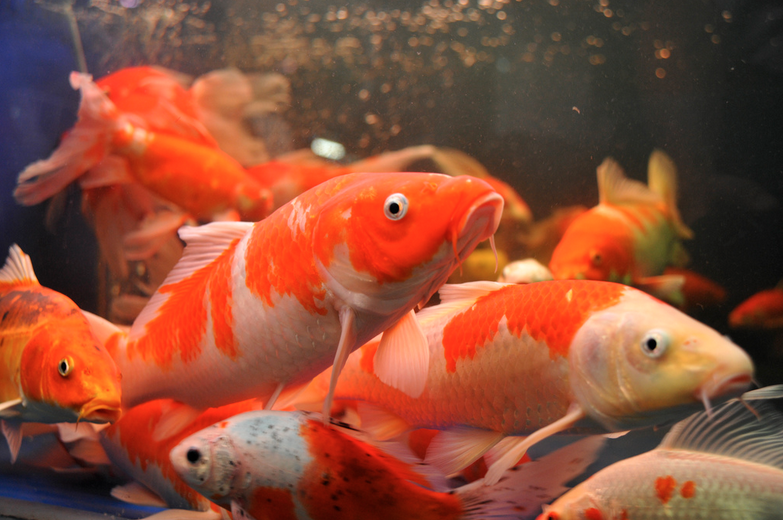The Basics of Koi Breeding: Part I
Thinking about adding to your koi population? Then consider koi fish breeding. The pastime can vary from a hobby to a full-out profession. If you have the time, space, and budget to expand your koi collection, koi breeding may be for you! Koi breeding is an easy way to expand your pond’s population and can earn you quite a bit of money. Sometimes in larger sized ponds koi fish will reproduce on their own. In most cases, if you’d like to add to your koi populations, steps need to be taken to formally breed.
PREPARATIONs
Breeding season lasts from February through May when water temperatures reach 68˚F and koi reemerge from winter reclusion. However, breeders use tanks for a more controlled environment – a breeding tank and a nursery tank. These hold about 200 gallons each and are at least 4 x 4 x 2 feet. They need to be fully equipped with pumps, filters, and heating. The breeding pond will also need some artificial grass or spawning brush for the newly released eggs.
When choosing which koi you’d like to breed, keep in mind the traits you’d like to pass down to the koi fry. Colors, patterns, and scale types are all traits that can be passed down, though predicting which genes will appear in the offspring is difficult to determine. Two normal-scale koi will usually produce normal-scale koi, though, and metallic scales will precedent genes for normal sheen. Unless the breeding koi are from a lineage, most traits that will appear are unpredictable. In the thousands of offspring that are produced, many variations will appear.
Generally, it is recommended that you pick your two best-looking koi to breed. When choosing your male and female koi, look for healthy fish. Choose a female koi that is at least 3 or 4 years old. Because of the taxing nature of breeding, females any older than 5-8 years are not recommended. For males, ages 3 and up will do. You may want to select a few back-up males for the breeding session if one becomes too aggressive.
Another consideration to make when breeding koi is size. Female koi that are larger in size will endure the breeding process better than smaller ones. They will also produce larger eggs, making larger and healthier baby koi that grow quicker than smaller fry produced by smaller females.
BREEDING TIME
Place the female koi in the breeding tank first. Give her time to get acclimated to the new environment. She will explore this new space at this time. Make sure you place a net over the breeding tank because once the koi begin breeding, the process will become aggressive and violent, and you don’t want your koi fish to end up on the floor.
Once a female begins nosing around breeding areas, she is ready to begin breeding. Add a male to the tank. The female will then release pheromones and they will breed overnight. The male wrestles the female in an aggressive manner by head-butting, biting, and shoving her. This is in an effort to push her towards the breeding foliage.
During the wrestling match, the female koi releases eggs. These attach to breeding foliage and are met by the released milt, or sperm. The milt enters the eggs which are then fertilized. At this point both koi stop and eat a few of the eggs. The process is then repeated over until the the female tires and stops responding. At this point, she should be removed and placed in the nursery tank. The male can then be returned to the pond.
Stay tuned for our next post the basics of koi breeding and the aftercare for the newly spawned koi eggs!
Have any tips for other koi connoisseurs? Leave us a comment or write to us via the contact form!







